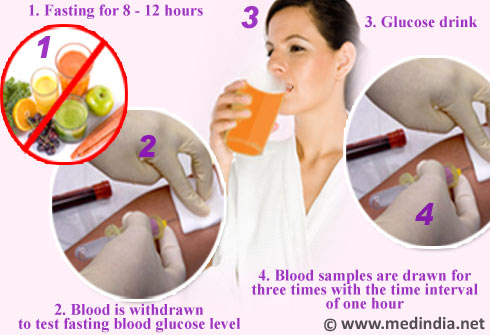
04.06.2016
What this test is used for?
The glucose tolerance test checks how quickly and effectively does the body
process glucose. Glucose is a major source of energy for most cells of the
body, including brain cells. The body gets glucose from food. After food
ingestion, glucose levels in the blood rise. In response to high glucose
levels, a hormone – insulin is released from pancreas. Insulin forces cells to
take up glucose and this decreases glucose level in the blood. Blood glucose
levels remain high if the body does not produce enough insulin (type 1
diabetes) or if the cells are resistant to insulin effects (type 2 diabetes).
When the test is ordered?
The glucose tolerance test is done to diagnose prediabetes and diabetes. It is
also ordered to check for gestational diabetes.
How this test is performed?
First, a sample of blood is taken to measure fasting glucose levels. Then the
patient is asked to drink a liquid containing a certain amount of glucose (usually
75 grams). The blood sample is taken again 2 hours after drinking the solution.
How to prepare for the test
Fasting is required for at least 8 hours before the test. Some medications may
affect the test results. It is essential to first consult the doctor and get
detailed instructions about the preparation needed.
Interpretation of results
The test results must be interpreted by a doctor.
Normally, after taking glucose, its level rises and this stimulates releasing
of insulin. As a result, glucose levels return to norm. If this does not happen
and glucose levels remain high after 2 hours, it means that glucose tolerance
is impaired. This may be due to insufficient amount of insulin or resistance to
its effects.
The article was prepared by T.Kachlishvili and T.Khutsishvili.
